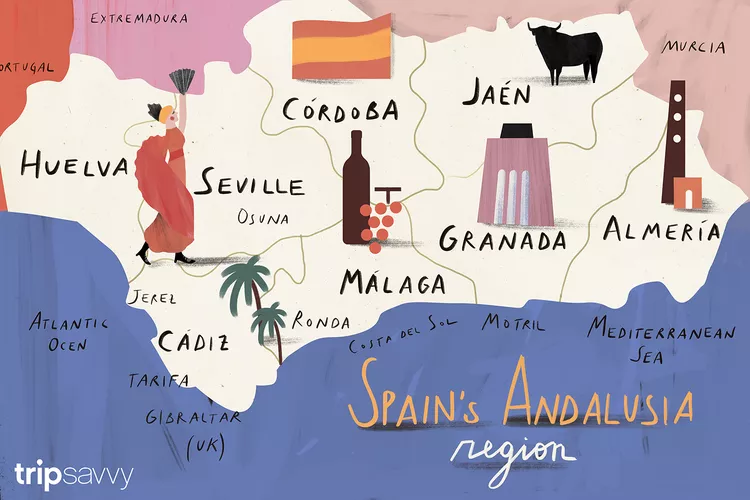Discover Andalusia: Spain’s Cultural Heart
Sun-baked Andalusia is a tourist favorite where Moorish and Christian Spain showcase their cultural strengths against a backdrop of flamenco, tapas, matadors, and bullfights. This vibrant region offers a rich tapestry of experiences for travelers seeking a unique adventure.
Overview of Andalusia
Contrary to the perception of many who have only explored the south of Spain through literature, Andalusia features the Iberian Peninsula’s highest mountains, with nearly 15 percent of its terrain exceeding 3,300 feet above sea level. Moreover, its unique ecosystems are noteworthy, as almost 20 percent of Andalusian soil lies within protected areas.
The region’s relatively mild winter and spring climate entice numerous visitors from colder climates. Additionally, it serves as an excellent starting point for vacations in Europe during early spring. However, during summer, visitors may find it beneficial to consult the historic climate charts for Seville if planning a trip during the hotter months.
Major Cities of Andalusia
Andalusia is well known for its compactness, harboring many tourist destinations without the need for long train rides or extensive driving. However, during the summer, the heat can be intense, leading to a preference for late-night activities.
First, the big three cities:
- Seville – As the capital of Andalusia, Seville is renowned for its Semana Santa celebrations, the enchanting Barrio Santa Cruz, delicious tapas, and spectacular flamenco shows. This city also experiences a subtropical Mediterranean climate, characterized by dry summers and wet winters.
- Cordoba – Though often overlooked, Cordoba boasts the remarkable Mezquita de Cordoba, a World Heritage site. Historically, it was regarded as one of the largest cities globally during Islamic rule in the 10th century. During the sweltering summer months, average high temperatures can reach around 99 degrees Fahrenheit.
- Granada – Home to the iconic Alhambra, Granada offers a glimpse into its medieval Moorish past through its narrow streets in El Albayzín. The city also features the Generalife, a stunning 13th-century leisure palace set in beautiful gardens.
The coastal cities:
- Cádiz – A captivating city center ideal for exploration, especially during the vibrant Carnival in February. A visit of two to three days is recommended unless the beach captures your heart.
- Gibraltar – A worthwhile visit to connect with British heritage, so be sure to bring your Pounds Sterling.
- Malaga – Once synonymous with the jet-set lifestyle, Malaga has evolved with newly opened art galleries and a popular gastro market, Mercado Merced, drawing food enthusiasts.
- Motril – A charming beach destination, perfect for exploring the picturesque villages of Alpujarras.
- Jerez – Renowned as the capital of Andalusian horse culture and sherry production, Jerez is known for its deep-rooted flamenco traditions.
- Ronda – Famous for its bullfights, breathtaking ravines, and historic Islamic architecture, Ronda is a must-visit destination.
Suggested Itinerary for Exploring Andalusia
If you’re looking to maximize your time in this incredible region, consider following a structured itinerary. Many travelers find it beneficial to visit key locations like Seville, Cadiz, Ronda, Malaga, Granada, and Cordoba, ensuring a comprehensive understanding of Andalusia’s rich cultural heritage. This itinerary allows for an immersive experience, highlighting the diverse attractions Andalusia has to offer.




